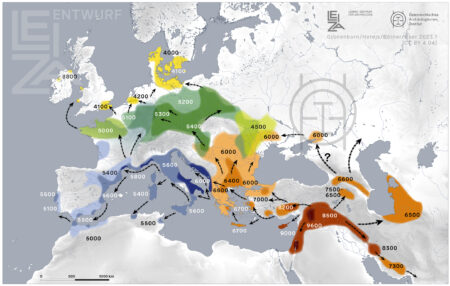- Predictors of vitamin A rich food consumption among women living in households growing orange-fleshed sweetpotatoes in selected regions in Uganda. Women who knew less about vitamin A consumed more vitamin A-rich foods. Go figure.
- Degeneration of cleaned-up, virus-tested sweetpotato seed vines in Tanzania. Those orange-fleshed sweetpotatoes better be regularly cleaned, or resistant to viruses.
- Seaweed’s contribution to food security in low- and middle-income countries: Benefits from production, processing and trade. It’s the income. Maybe people should sell orange-fleshed sweetpotatoes rather than eat them?
- Fruit and vegetable processing and consumption: Knowledge, attitude, and practices among rural women in East Africa. Again, more knowledge, less consumption. Maybe equipment would help?
- Characterization of chickpea cultivars and trait specific germplasm for grain protein content and amino acids composition and identification of potential donors for genetic improvement of its nutritional quality. Hopefully knowing about their nutritional value will result in more use by breeders. Consumption is, however, another story.
- The Future of Food: Domestication and Commercialization of Indigenous Food Crops in Africa over the Third Decade (2012–2021). More knowledge about Indigenous crops by policy makers is needed for more consumption by regular people.
- Vegetables for Healthy Diets in Low- and Middle-Income Countries: A Scoping Review of the Food Systems Literature. Knowledge is increasing, but gaps remain, in particular joining-up-the-dots along the value chain kind.
- Tiangong Chuxin: An Early Maturing Pumpkin-shaped Grape Cultivar. I don’t care about its nutritional value or even taste: I’d eat it just for its shape.
- The societal role of meat—what the science says. The case for meat.
Are rare breeds important for the conservation of genetic diversity?
Today is the International Day of Biological Diversity. As it happens, Eat This Podcast today published an episode that raises a question I have seldom seen given any serious discussion. Are rare breeds important for the conservation of genetic diversity?
Like all headline questions, the answer is probably “No”. Let me explain.
Continue reading “Are rare breeds important for the conservation of genetic diversity?”
Brainfood: Vanilla diversity, Moth bean diversity, Lablab genome, Wheat allergens, Strampelli, Core collections, Collection structure, ITK, Sambal diversity
- Genetic diversity of the cultivated vanilla in Madagascar. Lots of genetic groups based on SNPs, but not structured in space or environmentally, except maybe by altitude.
- Genetic diversity, population structure, and genome-wide association study for the flowering trait in a diverse panel of 428 moth bean (Vigna aconitifolia) accessions using genotyping by sequencing. NW India is a centre of diversity.
- Chromosome-level genome assembly and population genomic resource to accelerate orphan crop lablab breeding. Two domestication “events,” with the 2-seeded form originating in Ethiopia.
- Reference proteomes of five wheat species as starting point for future design of cultivars with lower allergenic potential. Einkorn is really low in potential allergens.
- Nazareno Strampelli and the first Green Revolution. And all without SNPs, GWAS, genomes or proteomes.
- Developments on Core Collections of Plant Genetic Resources: Do We Know Enough? Do we ever?
- Assessing Genetic Distinctness and Redundancy of Plant Germplasm Conserved Ex Situ Based on Published Genomic SNP Data. Looks like we may know enough for some things after all.
- An (un)common remedy to Indigenous communities’ subsistence: revisiting Traditional Knowledge Commons. As we delve deeper and deeper into the genetic diversity of collections, let’s not forget the associated Indigenous Knowledge.
- Diversity of sambals, traditional Indonesian chili pastes. Case in point? Any allergens though, I wonder?
Build you own genebank subsets
Genesys has some cool new functionality: the Subsetting Tool. With it, you have the power to create customized subsets based on the climate and soil variables of your choice. You can read more about it in a blogpost, and in more detail in the user guide. I’l probably blog about it here in due course. Any requests?
The latest on the spread of agriculture in Eurasia
Remember the map of the spread of agriculture in Europe that I mashed up with barley genebank accessions a while back? Well, there’s a new version out, according to a tweet from Detlef Gronenborn.
It will eventually make its way here with the previous versions.
